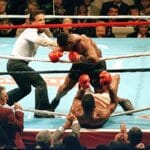Whether it’s their choice of shoes or what they eat for breakfast, runners are always seeking a competitive edge to shave another minute off a personal record. While gear and diet choices are important, they’ll never be enough if your body is out of balance.
Learning your body’s cues will give you the direction you need to improve your runs and prevent injury. Back pain in runners is often a symptom of underlying issues that stem from weaknesses and inefficiencies beyond the actual spine. If back problems keep popping up, it’s time to address the underlying cause of your pain to make sure you can hit the ground running — and it may not originate in the back at all.
Most people tend to have overly tight hip flexors due to excessive sitting. Tight hip flexors pull your pelvis out of its ideal position and into an anterior pelvic tilt, forcing you to rely heavily on the quads and low-back musculature, creating excess stress at the SI (think tailbone) and lumbar spine.
This isn’t great news for anyone, but for runners this can be especially troublesome because they count on the glutes, proximal hamstrings, and abs for their sport. In an ideal stride, you use your abs and lats to help stabilize your trunk, your abs and glutes to stabilize your pelvis, and your glutes and hamstrings to control speed and stride length. Losing the full ability of these muscles is limiting. You can’t fully extend the hips to get a longer stride, nor will you have the same explosive muscle power. Without all of your muscles working together, you’ll fatigue faster.
To address your back problems and speed up your stride, start with releasing those overly tight hip flexors. Once things are loose you can work on strengthening the weak muscles that have been shut down. The result? A balanced back and a stronger run.
The Real Reason You Can’t Run Faster










